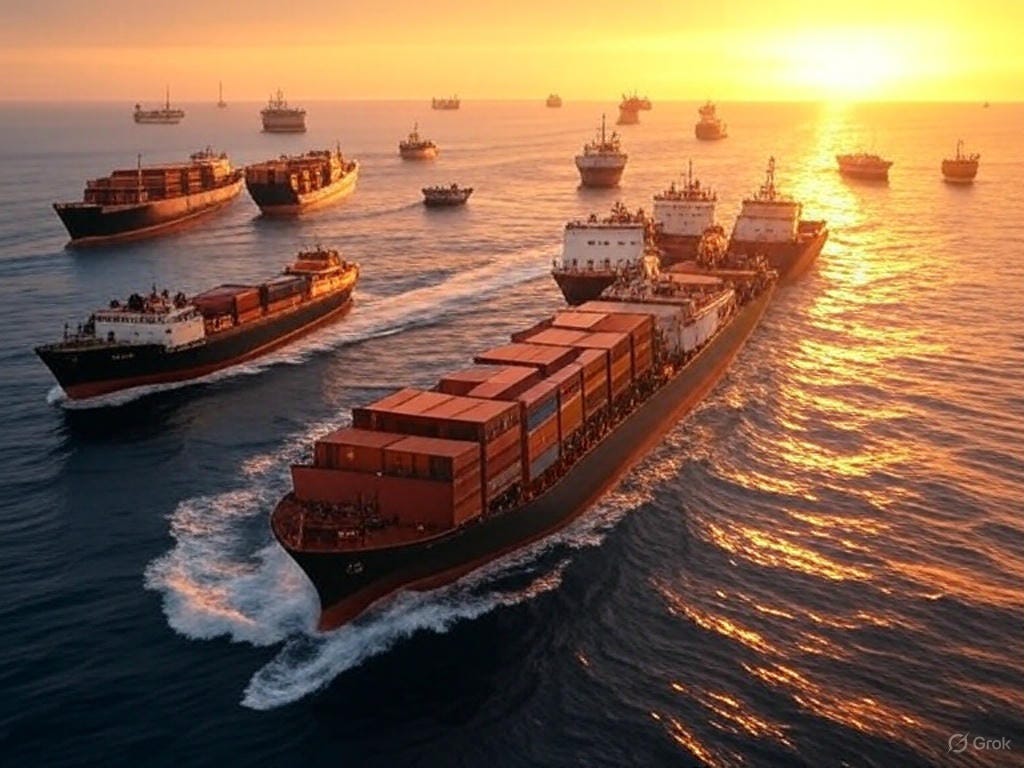Trump uncertainty may be India's big break!
Trump's tariffs and policy changes have unleashed uncertainty. But within this confusion is a window of opportunity for India. And we are ready this time. We cannot miss this.
Donald Trump’s policies have opened a rare window for India to cement its place in global trade and supply chains. This is not the first time such an opportunity has arisen, but unlike previous moments, India is now better positioned to seize it. A look back at India’s journey reveals why this moment is different and how the country can capitalize on it.
India signed GATT on October 30, 1947, effective January 1, 1948, as one of the 23 original contracting parties. But GATT was just a mechanism. We lacked intent and preparation. India’s misguided socialist dreams, protectionist policies and chokehold of license-raj limited its ability to fully leverage this membership.
1991 reforms raised hopes!
The first real chance for India to join global supply chains was after 1991. That time Indian industry was not ready. It was pampered by protectionist regulations. However, threat of competitive forces and lure of the global opportunity woke some players out of their cozy slumber. But it was not easy. At this time, Indian government and polity were busy with other priorities.
Geopolitical Strain: Pakistan-backed terrorists in Punjab and Kashmir diverted resources and attention.
Political Instability: The lack of clear election mandates created political uncertainty and turmoil. Frequent changes in government created uncertainty, deterring foreign investment.
Infrastructure Deficits: India also had poor infrastructure - no good ports, no roads and railways were all multiple gauge. Power was inadequate, water was scarce for people and even less available for industry. With that uncertainty nobody would have brought their manufacturing plants into India.
These conditions made India an unattractive destination for global manufacturing. No multinational would risk setting up plants amid such uncertainty. India’s GATT membership, while significant, did not immediately translate into global supply chain integration due to these domestic constraints.
It took them 1995-96 for Indian corporates to get into the act.
In 1995, GATT was replaced by WTO a more comprehensive global trade agreement.
But just as Indian corporates were getting into the act, geopolitics turned against us. The US and nuclear powers were pushing the world into a Nuclear Test Ban Treaty and other allied agreements. If India signed these agreements, it would be impossible for India to improve and enhance our nuclear weapons. It meant that India had to conduct its own nuclear tests before signing these treaties.
India’s nuclear tests in 1998 triggered severe international sanctions, further isolating the country economically. These sanctions were no joke; they crippled India’s ability to attract investment and technology transfers, stalling progress.
Fixing the basics - 1999-2004
In 1999, India got its first reasonably stable coalition government under PM Vajpayee. While still burdened with sanctions, this government focused on fixing the basics.
Golden Quadrilateral: A massive highway project connecting India’s major cities.
Port Development: New and upgraded ports enhanced trade capacity.
Railway Modernization: Gauge standardization and electrification improved logistics.
These initiatives addressed some of India’s infrastructure woes, aligning with its WTO commitments to facilitate trade. However, global events intervened. The dot-com bubble burst and the 9/11 attacks in 2001 triggered a worldwide economic downturn, dampening India’s momentum.
A Slow Climb: 2003-2009
By 2003-04, India began to gain traction in global markets. The economy entered a sustained growth phase, but skepticism persisted. Companies would not believe when we told them of the impending sustained growth spurt. They were hesitant to trust India’s potential, wary of bureaucratic red tape and corruption.
Despite these challenges, India started carving out a niche in services and select manufacturing sectors, both in services and manufacturing.
Unfortunately, instead of pressing on with reforms the UPA government as busy scamming the wealth out of the Indian economy. All these came to a head when 2008 financial crisis struck.
Banking Missteps and Cleanup
From 2009, political interference in India’s banking sector led to poor lending decisions, saddling banks with non-performing assets (NPAs). It took a decade of reforms, culminating in 2019, to stabilize the financial system.
Just as India was regaining its footing, the COVID-19 pandemic struck, disrupting economic recovery. The substantial erosion of personal finances while fighting COVID has been repaired to a certain extent only now.
The Trump Opportunity
Today, Trump’s policies—likely centered on reshaping global trade dynamics and reducing reliance on certain manufacturing hubs—have created a unique opening for India. Unlike in the 1990s, India now boasts:
Improved infrastructure, including world-class ports, highways, and a more unified rail network.
More reliable power situation with last-mile issues also being addressed for remote areas.
Cheap and effective last-mile telecom infrastructure.
A stabilized banking sector, post-2019 reforms.
A burgeoning digital ecosystem and skilled workforce.
Greater political stability and policy continuity.
These factors make India an attractive destination for companies seeking to diversify their supply chains. The groundwork laid over decades, from Vajpayee’s infrastructure push to recent financial cleanups, positions India to act swiftly.
Seizing the Moment
To fully capitalize on this opportunity, India must:
Streamline Bureaucracy: Reduce red tape to attract foreign investment.
Invest in Skills: Expand vocational training to meet global manufacturing demands.
Enhance Infrastructure: Continue upgrading ports, power, and logistics networks.
Promote Stability: Maintain policy consistency to build investor confidence.
So Trump's actions have given us a window where we have the ability and basic groundwork to take advantage of this situation. The question is whether India can move fast enough to turn this window into a lasting gateway.



